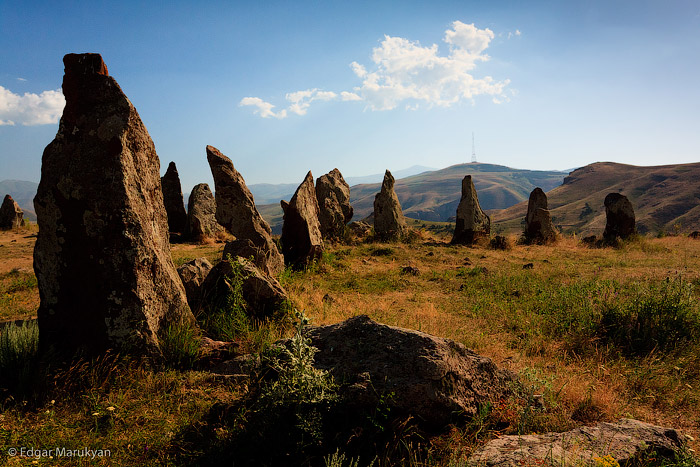Karahunj included in National Geographic’s list of most ancient observatories in the world

The Karahunj megalithic complex, which is also referred to as “the Armenian Stonehenge”, has been included in the National Geographic’s list of the most ancient observatories in the world. “Sirius and Orion shine at the top of the illuminated stones of the symbolic Karahunj. It is composed of hundreds of vertical stones,” writes the National Geographic.
Karahunj or Zorats Karer is located on the left side of the Darb stream of the Vorotan River not far from Sisyan and comprises vertical stones weighing up to 10 tons that form a monument. Several triangular, enormous stones are sorted through a certain system on a 25 hectare surface of the complex, and there are special holes opened for a microscope.
According to some archaeologists, Karahunj dates back to 3,000 B.C., but some believe the complex is older and was established in 5,000 B.C. In the 1990s, academician Paris Heruni had set forth a sensational hypothesis of the symbolic stone structure, referring to the complex as the oldest of the observatories discovered in that period.
The top of the National Geographic also included the Chaco Canyon (Mexico), the Portuguese Cromlech, the Meteora Monastery in Greece, the Sibiloi National Park (Kenya), the Alamut Castle (Iran), the Uluṟu-Kata Tjuṯa National Park (Australia) and Owens Valley (California), writes Ankakh.com.




 Արևելահայերեն
Արևելահայերեն Արևմտահայերեն
Արևմտահայերեն Русский
Русский






